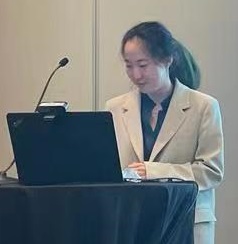


Cornell University TREESPEAR Graduate Research Associate Tong Wu presented her research on optimal forest management at the Northeastern Agricultural and Resource Economics Association (NAREA) Annual Meeting in Mystic, CT; an Association of Environmental and Resource Economists (AERE) session at the Western Economic Association International (WEAI) Annual Conference in Portland, OR; and the Agricultural and Applied Economics Association (AAEA) Annual Meeting in Anaheim, CA.
For her research on optimal forest management, Tong uses sophisticated dynamic programming and econometric techniques to tackle an important issue in natural resource economics: that of sustainable forest management. The sustainable management of forests is a critical, timely, and important issue worldwide. The need for sustainable forest management is particularly acute in developing countries such as China. In this paper, Tong develops a nested dynamic bioeconomic model of the management of forests that generate interdependent products that differ in their growth cycles, rates of growth, lengths of growing periods, and potential harvest frequency.
Tong applies her model to Moso bamboo forest management. Moso bamboo is the single most important bamboo species in China, accounting for 74% of China’s bamboo forest area, and the third most important source of timber in China. Both bamboo shoots and bamboo stems are harvested as valuable products: bamboo shoots are a traditional food source, and bamboo stem are used as timber for paper making, flooring, and construction.
Optimal Moso bamboo management is a complex dynamic problem. Moso bamboo forest management involves making decisions about the timing and quantity of bamboo stem harvests and bamboo shoot harvests. Both bamboo shoots and bamboo stems are valuable products. The harvesting of bamboo stems entails cutting down the bamboo plant, while the harvesting of bamboo shoots -- which grow annually from the bamboo plant -- does not. To solve for the optimal bamboo forest management strategy, her novel nested dynamic bioeconomic model nests an inner finite-horizon within-year daily dynamic programming problem that captures daily bamboo shoot growth within a season, inside an outer finite-horizon between-year annual dynamic programming problem that captures annual bamboo stem growth from year to year.
Tong finds that the actual bamboo stem and bamboo shoot harvests come close to approximating the optimal harvesting strategy, but have some features that differ from what jer model suggests to be optimal. Preliminary parameter estimates from her dynamic structural model suggest that bamboo farmers in China are acting as if they perceive or believe the growth rate for winter shoots to be very low and negligible, and lower than may actually be the case based on data and information on winter shoots. To the extent that some of the differences between actual harvests and optimal bamboo harvests reflect possible sub-optimal behavior on the part of Moso bamboo forest managers, her results may suggest ways to improve Moso bamboo forest management and policy. Her novel dynamic bioeconomic model has important implications for the sustainable management of forests worldwide, particularly when the forests produce products that can be harvested at more frequent intervals than the trees themselves.
For further reading: